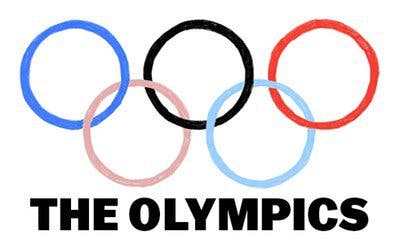
Where is Olympic basketball’s past? To hear the U.S. tell the story, the event didn’t really begin until 1992, the first year in which the pros were allowed to take part. That rule change produced the Dream Team, a perfect embodiment of early-90s America, if you ignore the relative lack of white people: cocky, very pleased with itself, and unspeakably dominant. Jordan, Ewing, Pippen, Malone, and Magic started the gold-medal match. The team won every game, by an average of 43.8 points. “I don’t know anything about Angola,” Charles Barkley said before a game against Angola, “but Angola’s in trouble” (the final score was 116-48). Michael Jordan was the only player who bothered to watch film of upcoming opponents. It was Michael Jordan’s singular greatness, according to the authors of The Undisputed Guide to Pro Basketball History, that “took a torch to NBA history.” Inadvertently illustrating its own observation, the Undisputed Guide contains no material on pre–Dream Team Olympians.
But Olympic basketball dates back to the Berlin games of 1936. America’s team that year featured seven players from an AAU League team organized by Universal Pictures and was coached by Jimmy Needles. They beat Canada 19-8 to win gold, the low score due to rains that made the outdoor clay and sand court all but unplayable. Sam Balter, the team’s lone Jewish player, had some understandable concerns about playing in Hitler’s Germany. Both he and the game he played could be seen as a rebuke to the Führer; in some regions of the US, Jews dominated basketball to such an extent that the sport was seen as inherently Jewish. The sports editor of the New York Daily News explained the game’s appeal to the “Hebrew,” by noting that “the game places a premium on an alert, scheming mind, flashy trickiness, artful dodging and general smart aleckness.” The 1936 team won every game it played.
The Dream Team wasn’t even the first Dream Team. In 1956, after years of forming Olympic squads by stitching together chunks of championship teams from various leagues, the U.S. assembled its first real super-team, led by Bill Russell and K. C. Jones. They beat the Soviet Union twice in Melbourne, including in the gold medal match, and their average margin of victory was 53.5 points. Many will argue that this team would not stand a chance against the ’92 Dreamers, that the game had changed too much, that the talent levels had spiked, that Jordan was simply the greatest ever. However, winning by 53.5 points is better than winning by 43.8 points. Plus Jordan never had to play on a wet clay court. Put the ’92 squad up against the Olympic greats of old, and the Dream Team would get smoked.
Look, I don’t mean that, or maybe I do, but I’m just trying to keep myself entertained. The U.S. men’s basketball team is so good it’s boring, and the women’s national team, which hasn’t failed to win a gold medal since 1992, is even worse. Having resigned myself to American basketball dominance, now and forever, historical miscellany furnishes the only surprises left. (Did you know that the 1952 squad was coached by someone called Warren Womble?) Maybe 2020 will see Olympic basketball return to the outdoor mud flats from whence it came. There’s always hope.
